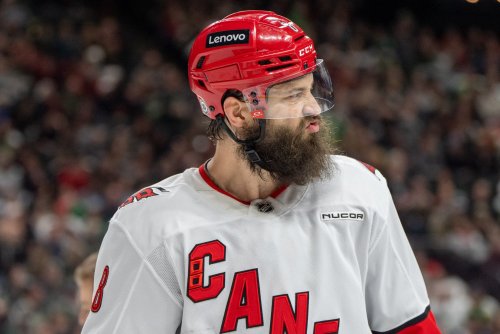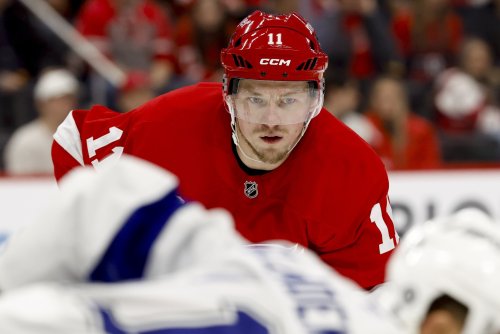
These biases make it tough for us to draw sound conclusions and leads to arguments because we are, in effect, watching two completely different games That's where the numbers come in. Numbers, and more importantly, patterns in the numbers, don't care about a player's name or anything else. They just are. So, with that in mind, I gathered a host of stats from the past 6 years of Minnesota Wild hockey to dig into an important question: what factors did Mike Yeo most consider when deploying players?
I evaluate these questions and consider both competing and unlikely theories such as Yeo considered goal-scoring the most when giving out ice time in the following mountain of words. If you're not so interested in my methods (I totally get that) or listening to me unpack the factors I include (that's okay, too), feel free to skip to the section labeled "The Results." It's a good read, I promise you.
The Method
To get at the heart of this question, I could try the obvious, call Yeo up and just ask him. Unfortunately, this route comes with a number of flaws. First and foremost, I have no idea what Mike Yeo's phone number is and I assume he doesn't want to talk to me, despite the fact that I made this awesome poster in support of him:
But second, and equally important is that Yeo might not even know why he deployed certain players. Better yet, he might think he was deploying players because they scored a lot or because they blocked a lot of shots, but at the end of the day, Yeo's perception of his own behavior is just as biased as our own, and for the same reasons.
So what we're left with is a deep dive into data gathered from Hockey Reference from the start of the 2010 NHL season until the day Mike Yeo was fired. This gives us 6 seasons of data on everything from player age and weight to goals and Corsi %. In addition to the 5 seasons of Yeo's coaching, I also included the 2010-2011 season, which accounts for Todd Richards' last season with the Wild as a point of reference so we can compare Yeo's coaching and emphasis to other NHL-caliber coaches.
To evaluate this data, I'm using a technique called ordinary least squares (OLS) regression. Essentially, OLS takes the data we give it and tells us which factors matter in determining a players' time on ice, how much they matter, and just as importantly, what doesn't matter. By considering factors related to "grit" and "skill" simultaneously, this technique can tell us what was more valued by Yeo. At its core, this method allows us to develop a formula for determining a player's time on ice and tells us how much weight each factor has in that formula.
The Factors
If it sounds like OLS is a cool technique, it's because it is. All it asks for in return for it's coolness is that we tell it which factors to consider and provide it enough data. To that end, the models I rely on for this analysis consider data related to player age, scoring, "grit", and possession. These categories show up in the data as the following stats:
Player age: If we want to test the common hypothesis that Yeo overplayed veterans, player age is the way to go.
Scoring: goals, assists. These stats are fairly obvious inclusions, especially given we want to test competing or plausible theories like "Mike Yeo played goal-scorers more than non-goal-scorers."
#Grit: hits, blocked shots, PIMs. These stats tell us who checked, put their body on the line, and pushed the envelope with the rules. They allow us to test how much Yeo valued players' physical attributes when determining ice time.
Possession: corsi for % relative: I split these statistics out among even-strength, short-handed, and power play measures. If we want to test a hypothesis that Yeo valued players who are strong on the puck, we should include statistics related to these factors.
The Results
Altogether, these stats allow us to evaluate four possible hypotheses. Note, some of these hypotheses may sound unlikely or run counter to our intuition, but that's the point. We have to evaluate them if we want to disprove them. Also note that, in this context, "significantly" means that some factor and time on ice are meaningfully related in a statistical sense. It means there's an identifiable pattern, not that that factor contributes a lot to time on ice.
So, first hypothesis: Mike Yeo distributed time on ice based on players' scoring ability.
Here, the stats don't bear that out entirely. In only 2 of Yeo's 5 years, both goal-scoring and assists were positively and significantly related to ice time. In neither of these cases was the effect of scoring a goal huge. Players who scored many goals only saw around a 5% bump in their ice time over those who scored fewer goals.
In some ways, this seems like vindication for Yeo. "Hey! See? He played guys who scored!" Ideally, though, Yeo's ice time would consistently have favored players who scored and given them a substantial bump for their scoring ways, as is the case with most other NHL coaches. To this end, Yeo's deployment seems to have favored other factors more.
One of these other factors is age, so we might claim: Yeo distributed more time on ice to veterans.
Surprisingly, the stats don't support this claim at all. At no point during his or Todd Richards' career did they favor older players over younger ones. There is no significant pattern to the relationship, and throughout the past six seasons, the effect of age is remarkably limited, around 30 seconds per game more for the oldest players on the team over the youngest.
So, what else might explain time on ice? We could state that: Grittier players were given more time on ice.
This is where the trend gets unfortunate. While hits were significant in 2 of Yeo's 5 seasons, Penalty minutes were significant and had a strong influence on TOI in every season. To that end, we can state that Yeo did favor players who spent time in the box and those who put out checks with somewhere around 10% more ice time than those who didn't check as much or take as many penalties.
Lastly, we want to consider the possibility that Yeo rewarded strong possession players with more ice time and evaluate the claim that: Time on ice was given to players who were good on the puck.
Unfortunately, none of the possession statistics in my study had a significant or strong relationship with TOI.
Interpreting Results and Making Predictions
So, with all these stats out in the open, what can we conclude from Mike Yeo's time in Minnesota? First, we now know that two important areas of hockey were not emphasized by Yeo in his deployment of players: possession and goal-scoring. At no point during his tenure did he reward goal-scorers, playmakers, or guys who just held the puck well with more ice time than others.
If that's not the case, then what is? Well, as we saw in the previous section, what really mattered to Yeo were factors related to a players' physical and defensive game. He didn't punish those who didn't score goals and he didn't reward those who produced a bunch of assists. Instead, Yeo invested much of the game in players who would take penalties, commit to hits, and get down to block shots.
Certainly, much of this isn't surprising. For a long time we've had the intuition that Yeo valued grit above all else. But now we have proof. And over the past five season of Yeo, we see that in the types of players he overplayed. To make that point all the more clear, I used the formula generated by our models to predict how much time individual players should have gotten and compared it to how much they did get. I put together the following graphs, which show the amount of time each player was given (dark blue) next to the amount of time they were predicted to get (lighter blue).
When you're reading these graphs, dark blue bars that are longer than light blue bars mean that a player was played more than we would expect in an ideal hockey universe. Longer light blue bars mean that a player was given less ice time than we'd expect.
2010-2011
2011-2012
Yeo's first season sees a reliance on young and old players alike, as Yeo tries to develop youth for a longer stay. Kassian's time is shorter than deserved and we may say goodbye to him soon!
2012-2013
2013-2014
2014-2015
As much time as Captain America Zach Parise has gotten, it still likely wasn't enough in 2014-2015, where he was predicted to have around three more minutes per game than he was given. Part of this prediction is likely due to his strong totals in all meaningful categories for our model, which fits his playstyle well. He's a gritty guy with a goal-scoring touch, which our predictive models like a lot.
2015-2016
So what can we take from these models and their predictions? First and foremost, we can draw the definitive and solid conclusion that Yeo relied heavily on carryover players in his early career and mixed that with some Houston Aeros callups. As time went on and Yeo's defensive system became baked into the DNA of the Wild, grinders, checkers, and "work ethic" guys became more and more (over-)valued on the time sheet.
What we've put together in this piece isn't wholly an indictment of Yeo's coaching, but it is illustrative of the types of players he preferred, either consciously or unconsciously, with his time on ice deployment. It's a bitter pill to swallow, but a necessary one if we want to start having real, even-keeled debates on the topic. In the coming weeks, I'll revisit this topic with a look into John Torchetti's first ten games, and expand the analysis to the whole of the NHL.
If you've made it this far, thank you. This was a long project to get through, with a lot of statistics language that was hopefully still readable. If you've gotten to this point, I want to hear from you. What do you think? Did any of these findings surprise you? Are there other factors or other theories to consider with time on ice? Leave me a comment below or hit me up @Real_JackVT.
Think you could write a story like this? Hockey Wilderness wants you to develop your voice, find an audience, and we'll pay you to do it. Just fill out this form.








Recommended Comments
There are no comments to display.
Join the conversation
You can post now and register later. If you have an account, sign in now to post with your account.
Note: Your post will require moderator approval before it will be visible.